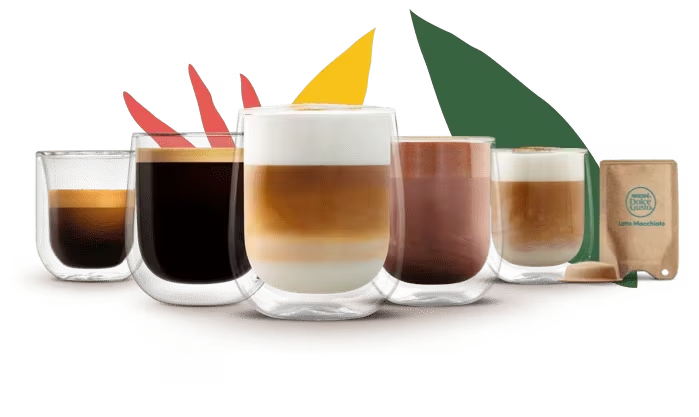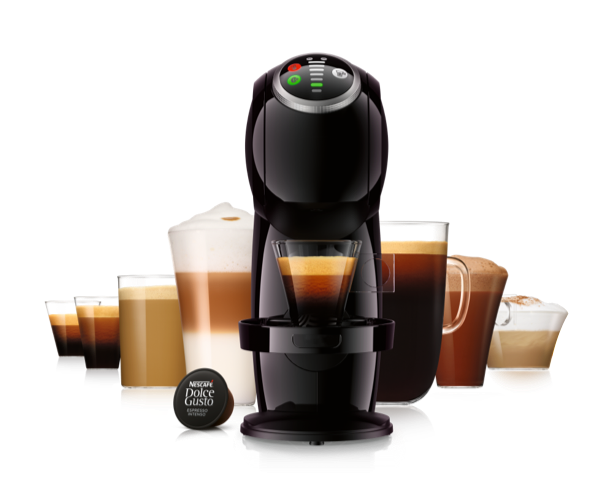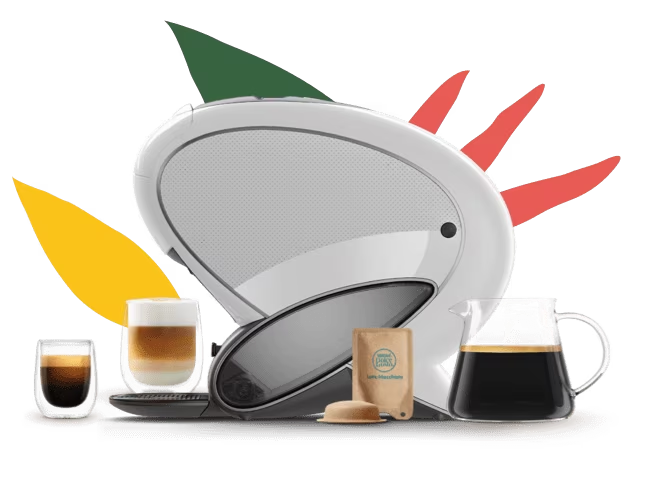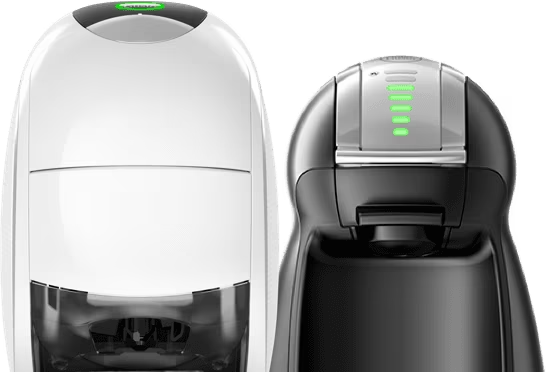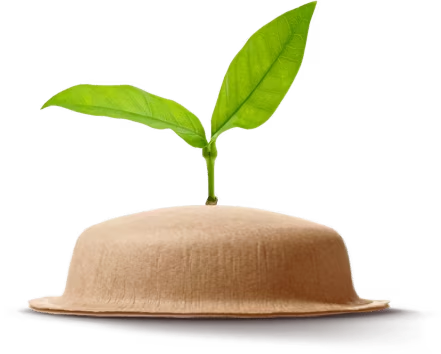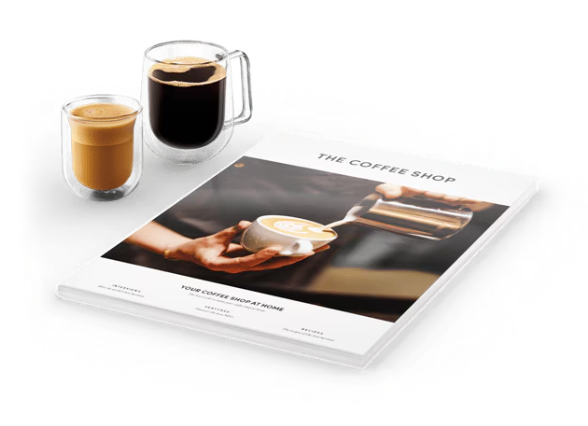
Take advantage of exclusive deals on NESCAFE Dolce Gusto® capsules and machines

Don't miss the latest updates: news, special operations...
History of Coffee Timeline
Coffee has been a popular drink for centuries, from 700 AD to today, from the first crack to our coffee pods. So how far back does coffee go and how have we been drinking it? Discover our history of coffee timeline below and find out some facts about the amazing coffee bean. NESCAFÉ® Dolce Gusto® coffee pods and pod machines are part of the interesting developments in the history of coffee too, so stay tuned for this!
You may think of Brazil and Columbia when it comes to the origin of the coffee bean, but it goes even further back than that. It begins in the continent of Africa, specifically Ethiopia in the Northeast region. Coffee beans have been in Ethiopia for centuries and stories of it go as far back as 700 AD.


After getting inspired by these countries, take a break from the rush of everyday life, choose your NESCAFÉ® Dolce Gusto® and plan your next adventure-flavored vacation
The history of coffee timeline
15-16th Century – The Middle East
It’s hard to pinpoint when drinking coffee began, but coffee drinking is an ancient practice and many Ethiopians would’ve known about this amazing drink for centuries. Word about it moved East and ended up in the Arab Peninsula.
As trade in North East Africa developed, the coffee bean began its travels up through the Middle East, where the history of coffee as a trade began. Between the 15th and 16th centuries, coffee bean growing spread from Yemen all the way to Turkey. Coffee also became a social activity by this time and coffee houses, called Qahveh Khaneh, in places like Istanbul became very popular. Coffee houses became places for socialising and sharing ideas and this new, invigorating drink was at the heart of it.
As trade in North East Africa developed, the coffee bean began its travels up through the Middle East, where the history of coffee as a trade began. Between the 15th and 16th centuries, coffee bean growing spread from Yemen all the way to Turkey. Coffee also became a social activity by this time and coffee houses, called Qahveh Khaneh, in places like Istanbul became very popular. Coffee houses became places for socialising and sharing ideas and this new, invigorating drink was at the heart of it.

Ad his scripta
Lorem ipsum dolor sit amet, consectetur adipiscing elit, sed do eiusmod tempor incididunt ut labore et dolore magna aliqua. Ut enim ad minim veniam.
16th-17th Century – Europe
European travellers through the East took notice of this new drink and decided to bring it home with them. By the 17th century, coffee became popular across Europe and coffee houses also started showing up in Germany, England, France and Austria. There were a variety of coffee houses for all social classes, from artists to gentlemen, coffee became an easy alternative to the usual beer and wine that was normal for drinking at the time.
17th-19th century – Caribbean, South and Central America
So how did coffee become such an international drink? The coffee trade became a new opportunity for business across Europe, but they needed places to grow it. Since the coffee bean is best grown in warmer climates, European colonists began to take the bean with them across empires.
The Dutch successfully began to grow coffee beans on the island of Java, now called Indonesia, but it was the French who first brought the coffee beans to Central America, which is now famed for its coffee beans. They also began to grow the coffee bean throughout the Caribbean, and South and Central America. It was French Guinea that began to grow the coffee bean in Brazil too, cementing their place in the history of coffee.
By the end of the 18th Century, coffee was one of the most valuable commodities to sell and is now just behind crude oil as one of the most traded products in the world.
The Dutch successfully began to grow coffee beans on the island of Java, now called Indonesia, but it was the French who first brought the coffee beans to Central America, which is now famed for its coffee beans. They also began to grow the coffee bean throughout the Caribbean, and South and Central America. It was French Guinea that began to grow the coffee bean in Brazil too, cementing their place in the history of coffee.
By the end of the 18th Century, coffee was one of the most valuable commodities to sell and is now just behind crude oil as one of the most traded products in the world.
The history of coffee brewing
The way we’ve brewed coffee over the ages has changed too. The journey to a delicious cup of coffee today is thanks to centuries of innovation, so it's an important part of the coffee history timeline.
13th Century
Originally, the berries that contain coffee beans were eaten whole until people began to steep the beans. A coffee would take 5-10 hours to be ready as it would be steeped in hot water.
16th Century
The first coffee-making technology was the Ibrik method, which originated around the 16th and 17th centuries. This was a well-known way to make coffee in Turkey and is still the basis for making coffee today. Ibrik is the name for the pot, the coffee grounds, sugar, spices and water are all put into the pot and heated up and cooled down repeatedly.
The first coffee-making technology was the Ibrik method, which originated around the 16th and 17th centuries. This was a well-known way to make coffee in Turkey and is still the basis for making coffee today. Ibrik is the name for the pot, the coffee grounds, sugar, spices and water are all put into the pot and heated up and cooled down repeatedly.
The first coffee-making technology was the Ibrik method, which originated around the 16th and 17th centuries. This was a well-known way to make coffee in Turkey and is still the basis for making coffee today. Ibrik is the name for the pot, the coffee grounds, sugar, spices and water are all put into the pot and heated up and cooled down repeatedly.
17th Century
The coffee pot
The coffee pot was a big change in the history of coffee as it began to serve more people. With a bigger base to heat up coffee quicker, these pots weren’t as small as the Ibrik coffee pots but they still used the Ibrik method of making coffee. Coffee urns were also created, which allowed for the brewing of large coffee quantities needed at a coffee house.
They also had a narrow spout to avoid too much coffee grounds being poured in, since there were no coffee filters. The first coffee filter was actually a sock, which coffee grounds and hot water were poured into.
They also had a narrow spout to avoid too much coffee grounds being poured in, since there were no coffee filters. The first coffee filter was actually a sock, which coffee grounds and hot water were poured into.
18th century
Biggin pots
This pot introduced cloth filters within the coffee pot. It also began to show how different coffee grounds affected the taste of coffee. If the grounds were coarse, the water would pour through too fast and make a weak coffee. Cloths as filters also affected the taste of the coffee, so not using a filter was still popular.
19th century
The 19th century saw the biggest development in the history of coffee and it’s where our modern coffee begins. With the development of instant coffee and coffee house businesses, the history of coffee takes an industrious turn.
Biggin pots
To solve the cloth filter issue in France, they invented the metal filter. Combined with a rammer, this compressed the coffee grounds and created a better-filtered coffee.
Percolators
This furthered the development of filtered coffee. Water would boil in the bottom of the pot and rise over the compressed coffee ground which is at the top of the pot. When it’s ready, the coffee reduces to the bottom of the pot, so you have fresh coffee with no grounds or cloth taste.
Siphon pots
Taking on the industrious nature of the century, this pot was made of glass so the process of making coffee could be seen clearly. This pot looked like round hourglasses and worked similar to the percolator, by heating the water in the bottom with the grounds in the top, separated by a filter. The only problem with this coffee pot was that, if too hot, the glass would explode. You can still find coffee made this way today and it’s good fun for a coffee fan.
Drip brewer
For this method, they would add the coffee grounds to a filter and put it on the top of the pot. Water is poured over and the coffee comes through the filter. This is still quite a popular way of brewing coffee to this day.
20th Century
With the invention of paper coffee filters, creating high-quality coffee quickly became part of the history of coffee. Coffee was now at the heart of people’s lives; it kept them going at work and it was a nice drink to get with friends.
Espresso machine
The espresso machine saw many developments throughout the decades, from 1901 to 1945. It was invented in 1884 but saw many updates within the 20th century, such as more coffees made at once in 1901 and even better pressure in 1945. The original machine created large batches so it was perfect for coffee houses.
French press
Like the espresso machine, this was created in the 19th century but saw amazing progress in 1958 with the invention of the Chambord, which is where we get the French Press we’re familiar with today. The French press is often made of glass with a plunger on top that pushes a series of filters down into the pot. You would first add the coffee grounds and water and leave it to soak, then you add the plunger and begin to press the grounds. This coffee machine was an essential move in the history of coffee, which we still use to this day.
Chemex
This coffee pot is glass and looks like an hourglass, it was invented by Peter Schlumbohm in 1941. It uses the pour-over method, which simply means you pour water over the coffee and pass it through a filter into the glass bowl below. This was a valuable addition to the history of coffee as it offered a different way of making a delicious cup of coffee.
Coffee pods
And finally, the history of coffee takes us to the amazing coffee pod, invented in 1986. This introduced an easy way to create delicious coffee even from home. For many years a Nestlé engineer Eric Favre made note of the struggle baristas had with maintaining the right pressure when making coffee. So, for a quick and high-quality fix, Favre patented the coffee pod machine, which created coffee quickly and with less fuss, it also added more crema.
Coffee pods saw their success when they began to enter homes as an easy way to make delicious coffee without going to a coffee shop and are now a staple for any coffee machine at home.
NESCAFÉ® Dolce Gusto continues to be part of the history of coffee which is constantly evolving. Coffee has developed into all sorts of flavours and styles and our coffee pods are a part of that history. With speciality coffee pods to suit a variety of coffee preferences, NESCAFÉ® Dolce Gusto has a passion for creating delicious coffee through ever-changing times.
Coffee pods saw their success when they began to enter homes as an easy way to make delicious coffee without going to a coffee shop and are now a staple for any coffee machine at home.
NESCAFÉ® Dolce Gusto continues to be part of the history of coffee which is constantly evolving. Coffee has developed into all sorts of flavours and styles and our coffee pods are a part of that history. With speciality coffee pods to suit a variety of coffee preferences, NESCAFÉ® Dolce Gusto has a passion for creating delicious coffee through ever-changing times.

Lorem ipsum dolor sit amet, consectetur adipiscing elit, sed do eiusmod tempor incididunt ut labore et dolore magna aliqua. Ut enim ad minim veniam, quis nostrud exercitation ullamco laboris nisi ut aliquip ex ea commodo consequat. Duis aute irure dolor in reprehenderit in voluptate velit esse cillum dolore eu fugiat nulla pariatur. Excepteur sint occaecat cupidatat non proident, sunt in culpa qui officia deserunt mollit anim id est laborum.
Lorem ipsum dolor sit amet, consectetur adipiscing elit, sed do eiusmod tempor incididunt ut labore et dolore magna aliqua. Ut enim ad minim veniam, quis nostrud exercitation ullamco laboris nisi ut aliquip ex ea commodo consequat. Duis aute irure dolor in reprehenderit in voluptate velit esse cillum dolore eu fugiat nulla pariatur. Excepteur sint occaecat cupidatat non proident, sunt in culpa qui officia deserunt mollit anim id est laborum. Lorem ipsum dolor sit amet, consectetur adipiscing elit, sed do eiusmod tempor incididunt ut labore et dolore magna aliqua. Ut enim ad minim veniam, quis nostrud exercitation ullamco laboris nisi ut aliquip ex ea commodo consequat.
Lorem ipsum dolor sit amet, consectetur adipiscing elit, sed do eiusmod tempor incididunt ut labore et dolore magna aliqua. Ut enim ad minim veniam, quis nostrud exercitation ullamco laboris nisi ut aliquip ex ea commodo consequat. Duis aute irure dolor in reprehenderit in voluptate velit esse cillum dolore eu fugiat nulla pariatur. Excepteur sint occaecat cupidatat non proident, sunt in culpa qui officia deserunt mollit anim id est laborum. Lorem ipsum dolor sit amet, consectetur adipiscing elit, sed do eiusmod tempor incididunt ut labore et dolore magna aliqua. Ut enim ad minim veniam, quis nostrud exercitation ullamco laboris nisi ut aliquip ex ea commodo consequat.







































































